#lpddr5
Explore tagged Tumblr posts
Text
Enhancing AI: Micron Launches Low-Power Mobile DRAM

High performance and enhanced power efficiency are provided by Micron low-power mobile DRAM for AI experiences.
In order to provide generative artificial intelligence (AI) experiences at the edge, your device’s low-power, high-performance mobile memory is essential. At Micron, our company has a proven track record of providing the best bandwidth and lowest power memory in the world to chip suppliers and worldwide smartphone manufacturers so they can include it into the top smartphones on the market.
With our enhanced 9.6 Gbps LPDDR5X memory solution, that nous are now sampling to the mobile industry, they have once again pushed the envelope. Benefits include considerably increased power efficiency and continuous high-bandwidth capability for AI-intensive applications. Every minute that the user saves is a win when it comes to battery life.
It provide an extra 4% power reduction over our previous generation of memory, which was already providing best-in-class power, for our most recent 9.6 Gbps memory solution. To put this power savings into context, 23 hours of video playback is promised by a top flagship smart phone vendor. End consumers would benefit from an extra hour of video playback if every component in a cellphone reduced power consumption by 4%, increasing the theoretical playback time to 24 hours.
End users require smartphones that are energy-efficient That would mean you could watch two more episodes of your preferred streaming programme before having to charge your gadget. According to consumer research, end customers’ biggest complaints about smartphones are related to their battery life, which is why manufacturers need to focus on making improvements in this area. As a matter of fact, 71% of smartphone owners said that the longest battery life is the attribute they look for most in a new phone. The battery life significantly surpasses other important aspects including the device’s durability (61%), camera quality (48%) and 5G connection (24%). Innovation in LPDDR5X is led by Micron: With the use of second generation high-k metal gate (HKMG) technology and enhanced dynamic voltage and frequency scaling core (eDVFSC) methodologies, our first-to-market 1ß (1-beta) manufacturing node can achieve previously unheard-of power savings. With the flexibility to deliver power and performance tailored to the task, this cutting-edge technology offers notable power improvements. Apart from reducing power consumption, the 1β process node offers a peak bandwidth increase of more than 12%. These increases in power and bandwidth speed up effective and efficient AI experiences at the edge.
Some essential specs and features: LPDDR5 has 50% quicker data access speeds than prior generations, enabling faster AI performance. Even faster rates are expected from LPDDR5X. Power efficiency: LPDDR5 is 20% more efficient than prior generations. This extends smartphone and other mobile device battery life. Higher capacities: LPDDR5 supports complicated AI tasks and mobile multitasking with 6GB, 8GB, and 12GB capacities. Micron’s LPDDR memory achieves these benefits through numerous methods: Lower operating voltages: Ultralow power supply voltages reduce power consumption in LPDDR. Standby current reduction: LPDDR has modes that reduce power consumption when the memory is idle. Advanced production processes: Micron’s 1α DRAM technology enables denser, more efficient memory chips. Micron’s low-power mobile DRAM meets the growing demand for strong and efficient AI on mobile devices. Micron’s LPDDR memory enables improved mobile apps by improving data speeds, power consumption, and capacity.
1ß: The most sophisticated DRAM ever made For premium smartphones, mobile memory with high bandwidth and low power consumption Important characteristics: Improved power and performance are delivered by LPDDR5 leadership extended by advanced pattern multiplication lithography. 9.6Gbps sample traffic is currently being sent, with even greater power savings. High-performance, low-power memory accelerates AI use cases at the edge These developments are expected to eventually filter down to high-end and mid-tier devices as AI use cases and applications become more and more prevalent in flagship smartphones. According to a report released earlier this year by Counterpoint Research, more than 1 billion AI smartphones are expected to be shipped worldwide by 2027 a clear indication of the enormous demand and rapid uptake of AI in the mobile ecosystem and among end users.
The need for high-performance and power-efficient memory to support the AI engines that guarantee outstanding end user experiences grows with the number of new AI use cases and the development of foundational models that provide more complex and accurate feedback.
As AI at the edge is still in its infancy, there are a lot of opportunities and obstacles that the mobile ecosystem will need to get beyond before AI reaches its full potential and becomes widely used.
The advantages are obvious: reduced infrastructure costs, quick replies without relying on the cloud, and data protection and privacy. Standard dilations for basic models are still being worked out, and the issues for hardware, software, and architecture are constantly being investigated.
FAQS What capacities are available for LPDDR5 DRAM? LPDDR5 is frequently offered in sizes ranging from 6GB to 12GB and supports more complex activities on mobile devices.
What devices use Micron’s low-power mobile DRAM? Smartphones and other mobile devices are the intended market for Micron’s LPDDR memory.
How does Micron’s DRAM achieve lower power consumption? Overall power demand is decreased at lower operating voltages. Reducing standby current uses less energy while not in use. Denser and more efficient memory chips are made possible by sophisticated manufacturing techniques like 1α technology.
Read more on Govindhtech.com
0 notes
Text

SKU CODEQF1-00025BrandMicrosoftProcessor12th Gen Intel® Core™ i5-1235U processorMemory8GB LPDDR5 RAMStorage256GB SSDOperating SystemWindows 11 Pro
1 note
·
View note
Text

Switch 2 Technical Specifications?
CPU: Arm Cortex-A78C
8 cores
GPU @ Nvidia T239 Ampere (RTX 20 series)
1 Graphics Processing Cluster (GPC) 12 Streaming Multiprocessors (SM) 1534 CUDA cores 6 Texture Processing Clusters (TPC) 48 Gen 3 Tensor cores 2 RTX ray-tracing cores
RAM: 12 GB LPDDR5, (some/all units will have LPDDR5X chips) Two 6 GB chips
Power Profiles:
Handheld:
CPU @ 1100.8 MHz GPU @ 561 MHz, 1.72 TFLOPs peak RAM @ 2133 MHz, 68.26 GB/s peak bandwidth
Docked:
CPU @ 998.4 MHz GPU @ 1007.3 MHz, 3.09 TFLOPs peak RAM @ 3200 MHz, 102.40 GB/s peak bandwidth
14 notes
·
View notes
Text
Spacetop G1, World’s first Laptop that uses AR Glasses instead of a Display
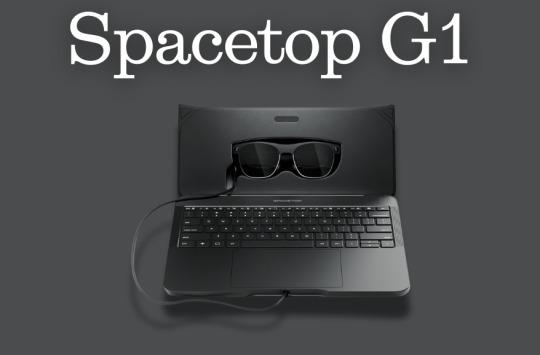
A laptop that employs augmented reality glasses as a display was called the Spacetop G1 system, and it was shown to a thousand productivity pioneers by the tech firm Sightful last year.
The upgraded Gen 1 device removes the requirement for the user to stoop over a tiny screen when working remotely on a laptop by placing a 100-inch virtual display directly in their eyes.
In this blog, The TechRobot will showcase the World’s first AR laptop: Spacetop G1. So let us begin.
What is Spacetop G1?
Sightful’s Screenless Laptop, the Spacetop G1, combines a computer with comfortable, lightweight augmented reality glasses. Running on the device is SpaceOS, a spatial operating system with an emphasis on online operations intended for productivity.
The weight of the AR glasses is 85 grams, but the Vision Pro, depending on the Light Seal, weighs between 600 and 650 grams. The keyboard is bulkier compared to a MacBook Air or iPad Pro, measuring less than 12 inches in width and weighing three pounds.
Cost of AR Laptop
The Screenless Laptop, Spacetop G1 charges $1,700 and is just a keyboard with spectacles attached.
Spacetop G1 Specs
Spacetop G1, features a Qualcomm Snapdragon QCS8550 CPU, Kryo GPU, Adreno 740 AI, dual eNPU V3, 48 INT8, 12 FP16 TOPs, 16 GB LPDDR5, 128 GB UFS3.1 storage, and 8-hour battery life.
They have two OLED display screens, a 50° field of vision, a 90Hz refresh rate, and very crisp text rendering.
The glasses enable Wi-Fi, Bluetooth, 5G, and a 5MP camera. They also contain a microphone for use in online meetings.
Benefits of AR Laptops
1. Endless View
With Spacetop’s Virtual Desktop, you may get amusement and information without having to navigate around, making it a convenient substitute for real screen space. Although it’s not the only solution with this functionality, this one could be the easiest to use.
A standard keyboard and touchpad, Spacetop’s AR glasses, and a perhaps lower price tag might allow customers to enjoy endless screen areas without sacrificing functionality. For individuals who would rather have a more ordered workstation, this would be a time-saving alternative.
2. Absolute privacy
Multi-monitor laptop attachments should not be used in public areas due to the increased danger of uninvited eyes peeping at private information caused by an excessive number of physical displays. Although privacy screens are available on certain computers and monitors, they are limited to one monitor.
To solve this, Spacetop is a Screenless Laptop, letting the user see their screen alone until it is shared with others. But it also means that those standing close to the user can’t see the screen without their glasses.
3. Improved posture
Laptops’ screens are firmly attached to the keyboard, making them portable yet uncomfortable. Some people find relief from this neck pain by attaching a desktop monitor.
The screenless laptop, Spacetop, provides a more comfortable height and does away with the need for arms or ergonomic monitor supports. Due to this, laptops are a better choice for use at home or in the workplace.
4. Laser Focus
Spacetop G1 is an Augmented Reality (AR) device that reduces visual distractions so users can work productively and enjoy their free time. The apps it may utilize, including Windows or macOS-based software and limited gaming, are restricted by its Android-based operating system and mobile hardware.
Notwithstanding these drawbacks, Spacetop provides a more practical experience than a typical computer since it places all of the necessary components in front of and surrounding users. Instead of letting others decide for them, users may choose whether to allow virtual distractions to affect them.
Highlight – Introducing Travel Mode For Meta Quest Headsets
Best AR Glasses for Laptops
1. Apple AR Glasses
Apple plans to develop AR glasses that look like conventional spectacles with a built-in display. A prototype of the glasses has a thick, attractive frame and resembles high-end luxury sunglasses. With references to Project Starboard and reports of a glassOS, the prototype is anticipated to function on iOS 14.
Though it could take a few more years for a public release, rumors indicate that Apple has already started the second phase of development. The glasses will have the ability to add prescription lenses, gesture-controlled instructions that connect with the Apple Watch, and a true vision display on both lenses.
Possible capabilities include the ability to use virtual things in real-world settings, do activities without using a phone, and enable immersive phone conversations and remote collaboration software.
2. Meta Glasses
Rebranding Facebook to Meta, Mark Zuckerberg is concentrating on augmented reality glasses and headsets. The business plans to deliver Meta spectacles, a prototype of their augmented reality spectacles, in late 2024. The Project Nazare and Project Aria prototypes provide a fully functional augmented reality experience, with 3D visuals and an elegant design. It is anticipated that the Meta Glasses will include an immersive experience with radio, speakers, and cameras, a holographic display with built-in projectors, batteries, and sensors, and a broad field of vision. In 2024, the prototype is anticipated to be released.
3. Xreal Air 2 Ultra
The Air 2 Ultra glasses from Xreal are an improvement over the Air 2 model and are aimed at competing with Apple’s Vision Pro and Meta’s Quest 3 headsets. Complete positional tracking, a form factor akin to eyeglasses, and compatibility for immersive AR apps, TV viewing, and flat-screen gaming are all features of the Air 2 Ultra.
It has a 52-degree field of vision, 500 nits of brightness, two cameras for environmental mapping, hand tracking, and compatibility with Xreal’s Nebula AR environment.
Is AR safe for your eyes?
Prolonged use of AR might result in headaches, nausea, and straining of the eyes. This is a result of our eyes continually focusing on objects at different distances when using AR. This can cause pain and eye tiredness.
Conclusion
The future of laptops with AR like the Spacetop G1 marks a breakthrough in laptop technology by utilizing augmented reality to provide a 100-inch virtual display that improves user posture, productivity, and privacy.
The Spacetop G1 presents a new option for remote work by addressing typical ergonomic concerns associated with standard laptops by mixing AR glasses with a powerful computing machine and the SpaceOS operating system.
Despite several drawbacks associated with its Android-based operating system and the possibility of eye discomfort after extended usage, the Spacetop G1 breaks new ground in augmented reality technology by offering consumers a more useful and engaging experience.
#spacetop1#ar#vr#ar glasses#laptop#virtual reality#augmented reality#mark zuckerberg#elon musk#meta ai#facebook
6 notes
·
View notes
Text
Xiaomi Launches Redmi Note 14 Pro Plus 5G Globally with Cutting-Edge Features
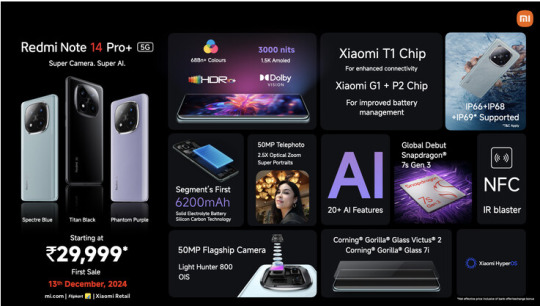
Xiaomi has officially launched the Redmi Note 14 Pro Plus 5G outside of China, marking its global debut alongside the Redmi Note 14 5G and Redmi Note 14 Pro 5G. The device, a successor to the Redmi Note 13 Pro Plus, introduces significant upgrades, including a robust 6,200 mAh battery and an optically-stabilized Light Hunter 800 primary camera.
Key Specifications and Features
The Redmi Note 14 Pro Plus 5G boasts a sleek design and premium build with a 6.67-inch AMOLED display. The screen offers a resolution of 2,712 x 1,220 pixels, a 120 Hz refresh rate, and an impressive 3,000 nits brightness, protected by Corning Gorilla Glass Victus 2. The device is also IP69-certified for dust and water resistance, a feature that sets it apart from its siblings.
Under the hood, the smartphone is powered by Qualcomm's Snapdragon 7s Gen 3 chipset, paired with LPDDR4X/LPDDR5 RAM and UFS 2.2/UFS 3.1 storage, depending on the configuration. Camera enthusiasts will appreciate its 50 MP Light Hunter 800 primary sensor, complemented by a 50 MP telephoto camera, an 8 MP ultra-wide-angle lens, and a 20 MP front-facing camera for selfies.
The 6,200 mAh battery is another highlight, supporting 90 W fast charging for quick recharges. The device will be available in three color options: Phantom Purple, Spectre Blue, and Titan Black.
Pricing and Availability
The Redmi Note 14 Pro Plus 5G will initially be available in India starting December 13. Xiaomi has not yet confirmed release dates for other global markets. The pricing for the Indian market is as follows:
8 GB RAM/128 GB storage: INR 30,999 (~$365)
8 GB RAM/256 GB storage: INR 32,999 (~$389)
12 GB RAM/512 GB storage: INR 35,999 (~$424)
Potential Expansion
While no official announcements have been made, the release of the Redmi Note 13 4G series suggests that Xiaomi could launch 4G variants of the Redmi Note 14 series in the future. Recent leaks support this possibility, making the Redmi Note lineup more versatile for a broader audience.
Stay tuned for updates as Xiaomi rolls out this feature-packed smartphone to more regions.
2 notes
·
View notes
Text
Tech friends, I need your help.
I'm choosing between 2 laptops to buy. We'll call them laptop 1 and 2, for the sake of simplicity. (I'm in no hurry to buy one, mine works... just fine... but not great. It struggles when I have too many tabs open in Chrome, and is lagging as I write this post with literally only Discord open in the background. I'm sure you can imagine how it handles any heavier program. Yes I made a mistake by cheaping out when I could afford better, yes I am aware of this, yes I regret it deeply, let's move on.)
Laptop 1 is about 100 dollars/euros/1000 SEK cheaper.
They both have OLED screens with approximately the screen resolution: laptop 1 has a 15.6" display with 2880 x 1620 resolution (16:9) and laptop 2 has a 14" display with 2880 x 1800 resolution (16:10). My current laptop has a 14" display with 1920 x 1080 resolution (16:9) so either way it's a pretty big upgrade. In terms of size alone, I prefer the 15.6". (Laptop 1 weighs 1.8kg and laptop 2 weighs 1.45kg, which is not enough of a difference that it really matters to me.)
Laptop 1 has a higher refresh rate (120Hz vs 90Hz on laptop 2).
Their processors are both AMD Ryzen 7s (8 cores, 16 threads, 16GB RAM) with equal base clock speed (3.2GHz), but laptop 1 has a Ryzen 7 5800H while laptop 2 has a Ryzen 7 6800H. The two processors use different RAM types (5800H uses DDR4 RAM & 6800H uses LPDDR5 SDRAM (though it is fully possible that the 5800H also uses SDRAM and the sites I'm looking at just aren't telling me)). 5800H has a higher peak temperature (105 Celsius vs. 95 Celsius). The 6800H has a higher turbo clock speed (4.7GHz vs. 4.4GHz).
They both have the same graphics card (NVIDIA GeForce RTX 3050), they both ship with Windows 11, and they both have 1TB of storage space.
Ultimately, I think the main question is whether laptop 2's better processor makes a big enough difference that it negates laptop 1's comfort of a bigger display and justifies the price difference despite it being smaller... and I do not know enough about laptops to make the call there.
("Build your own PC" and "buy a desktop PC" are both advice I will not take because I do not own or have space for a desk.)
(They're both Asus Vivobook Pro OLEDs: laptop 1 is M6500QC-MA025W and laptop 2 is M6400RC-KM001W, and more specifically, they cost 15990 SEK and 16990 SEK. My current laptop is also an ASUS Vivobook but I don't even think they make it anymore because it's so bad. It has a 2-core Ryzen 3 processor and 128GB of storage space.)
#z talks#not horse game#i hope i got everything important.#I'm aiming to purchase sometime in August or September#(that's when I'll have money from my summer job)#so I'm really in no rush lol#it just got in my brain again
18 notes
·
View notes
Text
Acer Aspire 5 15 Slim Laptop | 15.6" FHD 1920x1080 IPS Touch | Intel Core i5-13420H | Intel UHD Graphics | 16GB LPDDR5 | 512GB Gen 4 SSD | Wi-Fi 6 | Backlit KB | Protective Sleeve| A515-58PT-50UJ
Buy or Details click here video description link:
youtube
3 notes
·
View notes
Text
XIAOMI 12T

El Xiaomi 12T es un móvil que pertenece a la gama media con un precio de 599'99 €. Contiene un procesador bastante potente, que es el MediaTek Dimensity 8100-Ultra 5G con una frecuencia teórica de 19'4 GHz. En el apartado de almacenamiento y RAM no se queda corto, contiene 128 GB / 256 GB de almacenamiento y 8 GB de RAM. La bateria es de 5000 mAh y tiene una potencia de carga de 120 W. En cunto a cámara, tiene una cámara bastante potente con 108 MP y también tuiene una resolución de pantalla de 2712 x 1220. Finalmente tiene como software al MIU 13 basado en Android.
PRECIO: 599’99€
PROCESADOR: MediaTek Dimensity 8100-Ultra 5G
ALMACENAMIENTO: 8 GB + 128 GB | 8 GB + 256 GB
RAM: RAM LPDDR5 + Almacenamiento UFS 3.1
BATERIA: 5000 mAh
POTÉNCIA DE CARGA: 120 W
CÁMARA (MP) : 108 MP
RESOLUCIÓN PANTALLA: 2712 x 1220
SOFTWARE: MIU 13 basado en Android
3 notes
·
View notes
Text
Acer Aspire 3 A314-23P-R3QA Slim Laptop.
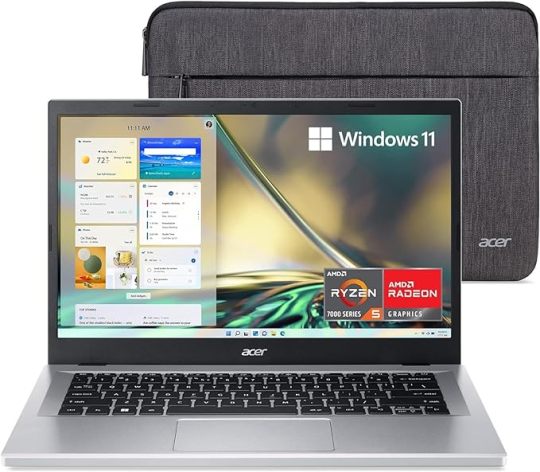
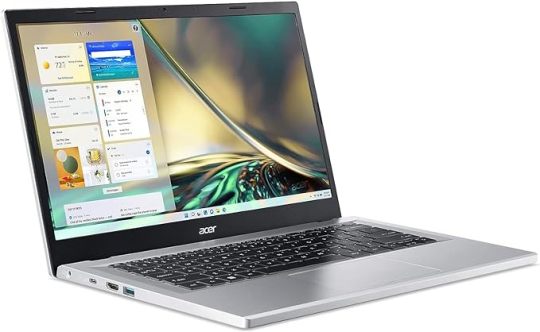
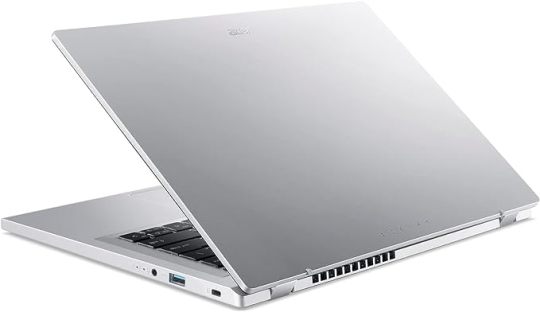
Acer Aspire 3 A314-23P-R3QA Slim Laptop.14.0" Full HD IPS Display. AMD Ryzen 5 7520U Quad-Core Processor. AMD Radeon Graphics | 8GB LPDDR5. 512GB NVMe SSD. Wi-Fi 6 | Windows 11 Home,Silver : Electronics.
#laptop#acer laptop#best laptop#acer nice laptop#quality laptop#welcome home#super mario#ryan gosling#succession#ted lasso
2 notes
·
View notes
Text
"ASUS VivoBook 15: Diwali Laptop Deal for Gaming?"
Diwali, the Festival of Lights, is a time of joy and celebration, and what better way to brighten your world than with a fantastic laptop deal? ASUS VivoBook 15, priced at ₹51,990 (a delightful 32% OFF), is here to light up your computing experience this Diwali. In this laptop reviews, we'll explore if the ASUS VivoBook 15 is not just a great Diwali laptop offer, but also a suitable choice for gaming.
ASUS VivoBook 15 – Your Diwali Laptop Offer:
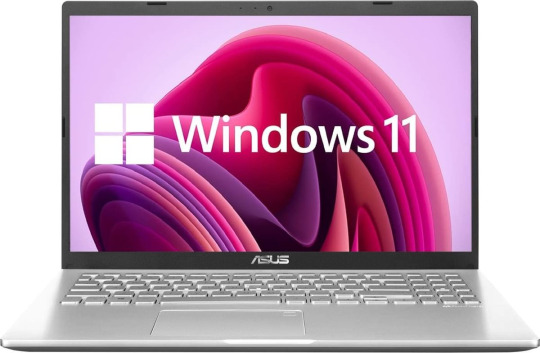
Price: ₹51,990 (32% OFF)
Processor: AMD Ryzen 5 7520U Mobile Processor
Memory: 16GB LPDDR5 RAM
Storage: 512GB M.2 NVMe PCIe 3.0 SSD
Display: 15.6-inch FHD OLED, 60Hz refresh rate, 600 nits
Graphics: Integrated AMD Radeon Graphics
Operating System: Windows 11 Home
Special Feature: Backlit Keyboard
Gaming Performance:
One of the most pressing questions that often arise when considering a laptop purchase is, "Is ASUS VivoBook 15 good for gaming?" The answer is multifaceted. Powered by an AMD Ryzen 5 7520U processor and integrated AMD Radeon Graphics, this laptop can handle casual gaming and older titles with ease. If you're a gamer looking for a machine to play the latest AAA titles with all the bells and whistles turned on, you might find this laptop slightly lacking. However, for the average gamer, it offers a decent gaming experience.
Display:
One of the standout features of this laptop is its 15.6-inch FHD OLED display with a 60Hz refresh rate and a peak brightness of 600 nits. The OLED panel offers vibrant colors and deep blacks, making it an excellent choice for media consumption and casual gaming.
Portability:
The VivoBook Go 15 is a thin and light laptop, weighing just 1.63 kg. Its compact design and decent battery life of up to 6 hours make it suitable for on-the-go gaming and productivity tasks.
Diwali Laptop Offers:
Diwali is a season of incredible deals, and the ASUS VivoBook 15 doesn't disappoint. With a 32% discount, it's a steal for those looking to upgrade their laptops during the festive season. Don't miss out on this fantastic Deepawali offer laptop; it's a chance to get a laptop that's both affordable and versatile.
Laptop Reviews:
Our laptop blogs can help you understand the user experience better and get the best laptops options. Many ASUS VivoBook 15 owners have shared their insights and opinions, giving you a glimpse of what to expect when you make this laptop yours. Reading reviews from us can be a great way to find the best available offers and deals in the market.
Is ASUS VivoBook 15 good for gaming?
The answer depends on your gaming needs. If you're a casual gamer looking for a budget-friendly laptop that can handle older and less demanding games, the ASUS VivoBook 15 is a solid choice. Combine this gaming capability, and you're in for a sweet deal. While it may not cater to hardcore gamers, its beautiful display, portability, and affordability make it a desirable choice for many. So, this Diwali, consider brightening your world with the ASUS VivoBook 15 and enjoy the festivities with a new laptop in hand with best deals at Digindeals.
2 notes
·
View notes
Text
How Lunar Lake Intel Integrated Graphics Boost Performance
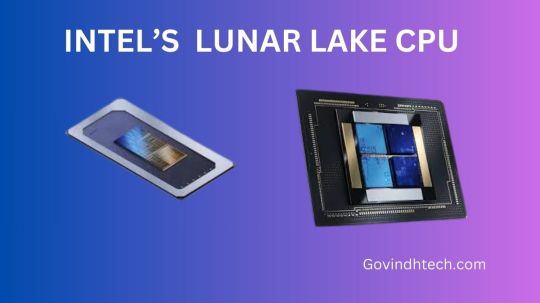
Lunar Lake Intel
Although there have been rumours circulating for months, I recently got some slides that pretty much confirm what has been said. According to reports, the Lunar Lake processors can have up to eight cores total four potent Lion Cove P cores and four efficiency-focused Skymont E cores at most. This setup reaffirms Intel’s ongoing emphasis on striking a balance between efficiency and performance in order to create a processor architecture that can manage a broad variety of computing demands while preserving energy economy.
The Intel Arc Battlemage is the confirmed basis for the integrated GPU (iGPU) found in the Lunar Lake processors, which can support up to 64 Xe2 Execution Units (EUs) and 8 Xe2 cores. This configuration suggests a notable improvement in graphics performance that may establish new standards for integrated graphics solutions. The use of TSMC’s N3B manufacturing technology for Lunar Lake’s compute tile is a noteworthy design innovation that represents a substantial shift in Intel’s strategy for utilising outsourced technology for its high-end chips.
The instructions per cycle (IPC) for the CPU core can also be improved in a number of ways by the architecture. Support for LPDDR5 memory has been added to this, complementing the integration of new memory technologies. LPDDR5 memory is more energy-efficient and faster than LPDDR4. The next generation of Lunar Lake-based laptops, tablets, and other mobile devices that depend on battery life and power consumption need these features.
Additionally, Microsoft, which places a high value on optimising software-hardware interaction, particularly for the anticipated changes in the Windows operating system, has collaborated in the development of the Lunar Lake MX chips. Users may anticipate a more optimised implementation of CPU features as a result of this collaboration, particularly in environments running the most recent versions of Microsoft operating systems. Early benchmarks of the Lunar Lake iGPU, which employs the Battlemage “Xe2” architecture, demonstrate impressive graphics performance. In certain internal tests, it nearly doubles the performance and is much faster than its predecessors.
Intel Lunar Lake Regretfully, the documents do not contain any verifiable third-party results or tangible benchmarks. Even in thin and light notebook form factors, this improvement may mark a turning point for integrated graphics and offer enough performance for increasingly demanding graphical tasks and games. But in order to avoid succumbing to the same false optimism that has already been severely let down by Arc, we will have to wait for the actual testing. But as we all know, drivers die first, and hope dies last.
With the documented improvements in core architecture, improved manufacturing techniques, and software-hardware optimisation (many thanks to Intel! ), Lunar Lake Intel has the potential to temporarily alter expectations for computing performance and energy efficiency. Specifically, the focus on integrated graphics performance highlights Intel’s dedication to offering reliable computing solutions for a variety of uses, including productivity and gaming. The tech community is looking forward to official announcements and more information from Intel, which is sadly not available from a few unofficial slides that are circulating. Really quite unfortunate.
While there have long been leaks and rumours surrounding Lunar Lake Intel CPU, recent events appear to corroborate some important details
Design for mobile devices first Lunar Lake Intel is made with a 15W TDP (thermal design power) in mind, which is in line with Intel’s U-series CPUs, which are renowned for striking a balance between performance and battery life.
Hybrid Architecture As with the Alder Lake and Raptor Lake architectures, the CPU is expected to combine energy-efficient Skymont cores (up to 4) with high-performance Lion Cove cores (up to 4).
Better Graphics Based on Intel’s Arc Battlemage architecture, the integrated graphics unit (iGPU) has the potential to provide 64 Xe2 Execution Units (EUs), which would result in a notable improvement in graphics performance compared to earlier generations.
Manufacturing Shift Intel is reportedly utilising TSMC’s N3B process to manufacture Lunar Lake Intel compute tile, which represents a shift as the company looks outside of foundries for the production of its high-end chips.
Performance Gains Intel reports a three-fold increase in AI performance for the GPU and Neural Processing Unit (NPU), along with “significant” improvements in instructions per cycle (IPC) for the CPU cores.
Intel Lunar Lake Release Date Rumours indicate a late 2024 release alongside Arrow Lake for desktops, though there is no official date as of yet. Although it seems like a rapid turnaround, trade shows have reportedly seen Intel display working Lunar Lake chips. The core of entry-level and energy-efficient laptops is anticipated to be Lunar Lake Intel , which may also include some options for light gaming.
It’s crucial to remember that official specs may vary from those based on leaks and rumours. As the formal launch draws nearer, stay tuned for more details.
Read more on Govindhtech.com
0 notes
Text
Motorola razr 40 launched in india at Rs.59000 for base variant
Motorola has launched the new moto razr 40 smartphone in India. The phone comes with large 6.9 inch oled foldable screen with 165Hz refresh rate. It has powered by snapdragon 7gen 1 SoC. Also has 8GB of RAM and 256GB UFS 2.2 storage. & Sage Green, Vanilla Cream, Summer Lilac color options.
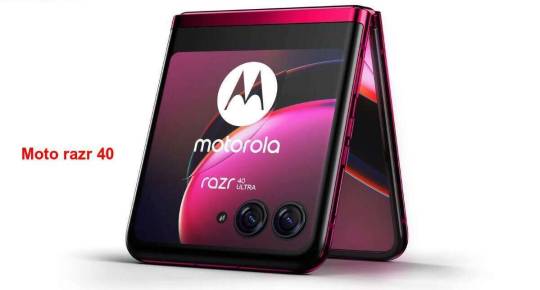
CAMERA-
The phone has 64MP main camera with 1.7 aperture, OIS, 13MP ultra-wide camera, macro option, f/2.2 aperture and 32mp camera front facing camera.
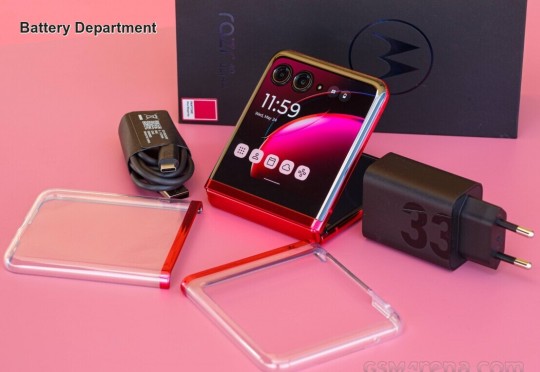
Software & UI-
This smartphone running with android 13 Tiramisu with MyUX 4.0 custom skin
CONNECTIVITY-
Supported Networks - 5G/4G/3G/2G
SIM Slots - Dual (nano)
Bluetooth - v5.3
Wi-Fi - Wi-Fi 6E
USB Port - USB Type-C
NFC Chip - Yes
Supported GPS - Dual Band GPS, AGPS, GLONASS
BATTERY-
Battery Capacity (mAh) - 4200
Fast Charging - Yes
Charging Speed - 30W
Wireless Charging - true
Wireless Charging Speed - 5W
Reverse Charging - No
Extra Features
3.5 mm Audio Jack - No
Set of Speakers - stereo
Face Unlock - yes
Fingerprint Reader - Side Mounted
IR Blaster - no
Sensors - Ambient Light, Fingerprint, Gyroscope, Light Sensor, Proximity
IP rating - IP52
PERFORMANCE-
Processor - Octa Core Snapdragon 7 Gen 1 5nm Mobile Platform with Adreno 730 GPU
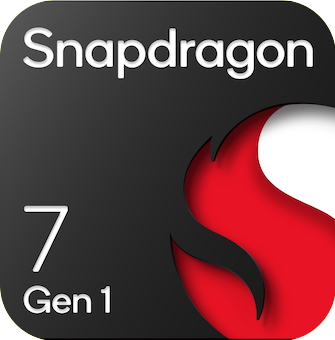
Memory - 8GB LPDDR5 RAM, 256GB UFS 2.2 storage

Pricing & Availability -
The price of the phone is Rs.59,999 and it is available on Amazon.com
PROS & CONS -
Pros:-
4K video recording support with video stabilization.
Amazing chipset performance for gaming and multitasking.
Latest Android 13 OS support.
Foldable LTPO AMOLED display with 144Hz refresh rate.
AMOLED cover screen with 1000 nits brightness.
NFC and 5G enabled smartphone.
The cover screen comes with gorilla glass protection.
Comes with 30W fast wired and 5W wireless charging support.
Stereo speakers are present.
Cons :-
Without Reverse charging support.
An optical zoom camera is missing.
Without any micro sd card slot.
An audio jack is not present.
Without custom UI.
Average battery capacity.
2 notes
·
View notes
Text
#Global LPDDR5 DRAM Market Size#Share#Trends#Growth#Industry Analysis#Key Players#Revenue#Future Development & Forecast
0 notes
Link
Choose the ready-to-go Aspire 3 with the latest Ryzen™ 7000 Series Processors made for practical multitasking and productivity. With ease-of-use The post Acer Aspire 3 A315-24P-R7VH Slim Laptop | 15.6″ Full HD IPS Display | AMD Ryzen 3 7320U Quad-Core Processor | AMD Radeon Graphics | 8GB LPDDR5 | 128GB NVMe SSD | Wi-Fi 6 | Windows 11 Home in S Mode appeared first on Market Place Shopping.
0 notes
Text
Price: [price_with_discount] (as of [price_update_date] - Details) [ad_1] From the manufacturer Redefine your selfies with 50MP Sony OIS Camera and Agni Instascreen Double the perspective in one go with simultaneous front and rear recording. Power your pictures with 3X telephoto portrait and 30X Super zoom Agni Mitra for a lifetime! Stay updated and secured on the go! Free handset replacement at your doorstep! Segment-Best Primary Display: 6.78", 1.5K resolution, 10-bit (1.07 billion colors), 120 Hz Refresh Rate, 3D Curved AMOLED with HDR, Widevine L1 support, in-display fingerprint & Strong X-axis linear Haptics Segment's 1st Mini AMOLED display on the back: Capture stunning Selfie photos & videos using 50MP Sony sensor camera with OIS, receive calls, see notifcations & use a bunch of useful day-to-day apps like Music Player, Steps & Calorie tracker, Voice Recorder, Timer, Stopwatch & Weather Triple Rear camera setup with AI modes: 50MP Primary camera with Sony sensor & OIS+EIS, Telephoto camera with 3X Optical Zoom+EIS, 8MP Ultrawide camera, 4K@30 fps video recording, 2X Portrait Zoom & 16MP Front Camera with Samsung Sensor & EIS Impeccable Performance & Thermal Management: Segment's 1st powerful Dimensity 7300X processor, LPDDR5 RAM & UFS3.1 Storage with Large Vapour Chamber Cooling Technology Customizable Action Button (short press, long press & double press) for shortcuts such as Ring to Silent & vice-versa, open any App, Voice Recording, SOS, Flashlight & Screenshot [ad_2]
0 notes
